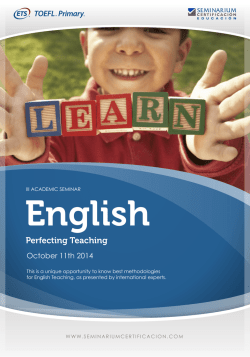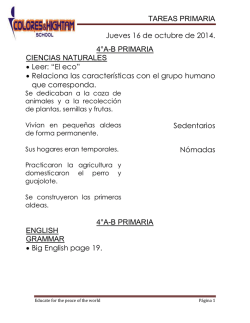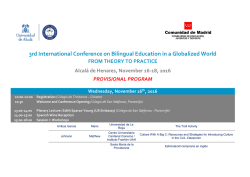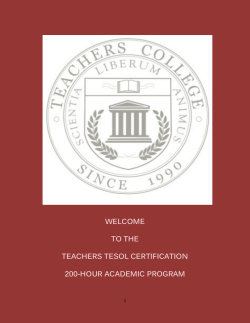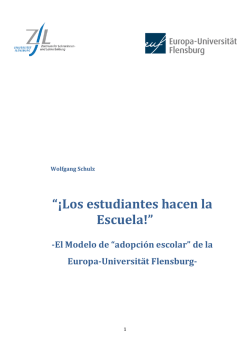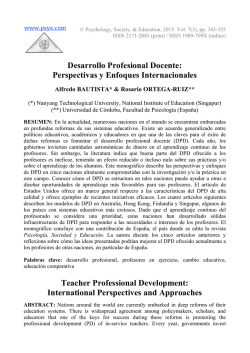
Contents
Índice Pág. Introducción ............................................................................................................... 5 Artículos Verbal and Nonverbal Teacher Immediacy and Foreign Language Anxiety in an Efl University Course .............................................................................................. Elisabet Pladevall Ballester 9 Should EFL Teachers Present Vocabulary in Semantically Related Sets? .......... Amparo Lázaro Ibarrola and María Ángeles Hidalgo Gordo 25 The Impact of Type of Approach (CLIL Versus EFL) and Methodology (BookBased Versus Project Work) on Motivation ............................................................. David Lasagabaster and Raquel López Beloqui 41 Pedagogy for Autonomy in FLT: An Exploratory Analysis on its Implementation through Case Studies ................................................................................................. Borja Manzano Vázquez 59 Perceptions of Teachers and Students of the Promotion of Interaction Through Task-Based Activities in CLIL.................................................................................... Víctor Pavón Vázquez, Marta Prieto Molina and Fco. Javier Ávila López 75 Teacher Satisfaction Concerning the Implementation of Bilingual Programmes in a Spanish University .............................................................................................. Alberto Fernández-Costales and Xose Antón González-Riaño 93 Lexical Errors in Writing at the End of Primary and Secondary Education: Description and Pedagogical Implications ............................................................... M.ª Pilar Agustín Llach 109 Teaching Young Learners English Vocabulary with Reading-Based Exercises in a Real Classroom Situation ....................................................................................... MA, Qing and SIN, Ching Ha 125 Porta Linguarum Nº 23, junio 2015 Pág. La música, un instrumento en la enseñanza del español como lengua extranjera mediante la aplicación de las nuevas tecnologías..................................................... Rubén Cristóbal Hornillos y Juan de Dios Villanueva Roa 139 Enseñanza y apropiación didáctica del yaruro, lengua ancestral de los pumé, un pueblo indígena originario de Venezuela ................................................................. Yuraima L. Rodríguez Blanco y Agustín de la Herrán Gascón 153 A Case Study on EFL Teachers’Beliefs About the Teaching and Learning of English in Public Education ...................................................................................... Claudio Díaz Larenas, Paola Alarcón Hernandez and Mabel Ortiz Navarrete 171 Research on Sexist Language in EFL Literature: Towards a Non-Sexist Approach Carmen Pérez-Sabater 187 Estudio de verbos copulativos a partir de corpus de aprendices ......................... Hui-Chuan Lu y An Chung Cheng 205 El aprendizaje y la enseñanza del español a través de su historia lingüística: puesta en práctica y valoración en una clase de estudiantes francófonos (nivel B2+/C1) Elena Díez del Corral Arteta 221 Los “útiles” para enseñar/aprender Lenguas en el Renacimiento y la ianua linguarum de W. Bathe (1611) ............................................................................. Javier Suso López 233 Recensiones English as a Foreign Language Teacher Education: Current Perspectives and Challenges .................................................................................................................... María Luisa Pérez Cañado 247 Enseñanza, adquisición y aprendizaje de la lengua extranjera (LE). Una revisión teórica desde la práctica reflexiva del aula ............................................................. Francisco Javier Sanz Trigueros 249 El reto de atender a alumnos inmigrantes en la sociedad española...................... Daniel Madrid Fernández y Marta Madrid Manrique 251 Professional Applications in English for Architects: The interview......................... Mª Luisa Blanco Gómez 254
© Copyright 2026
